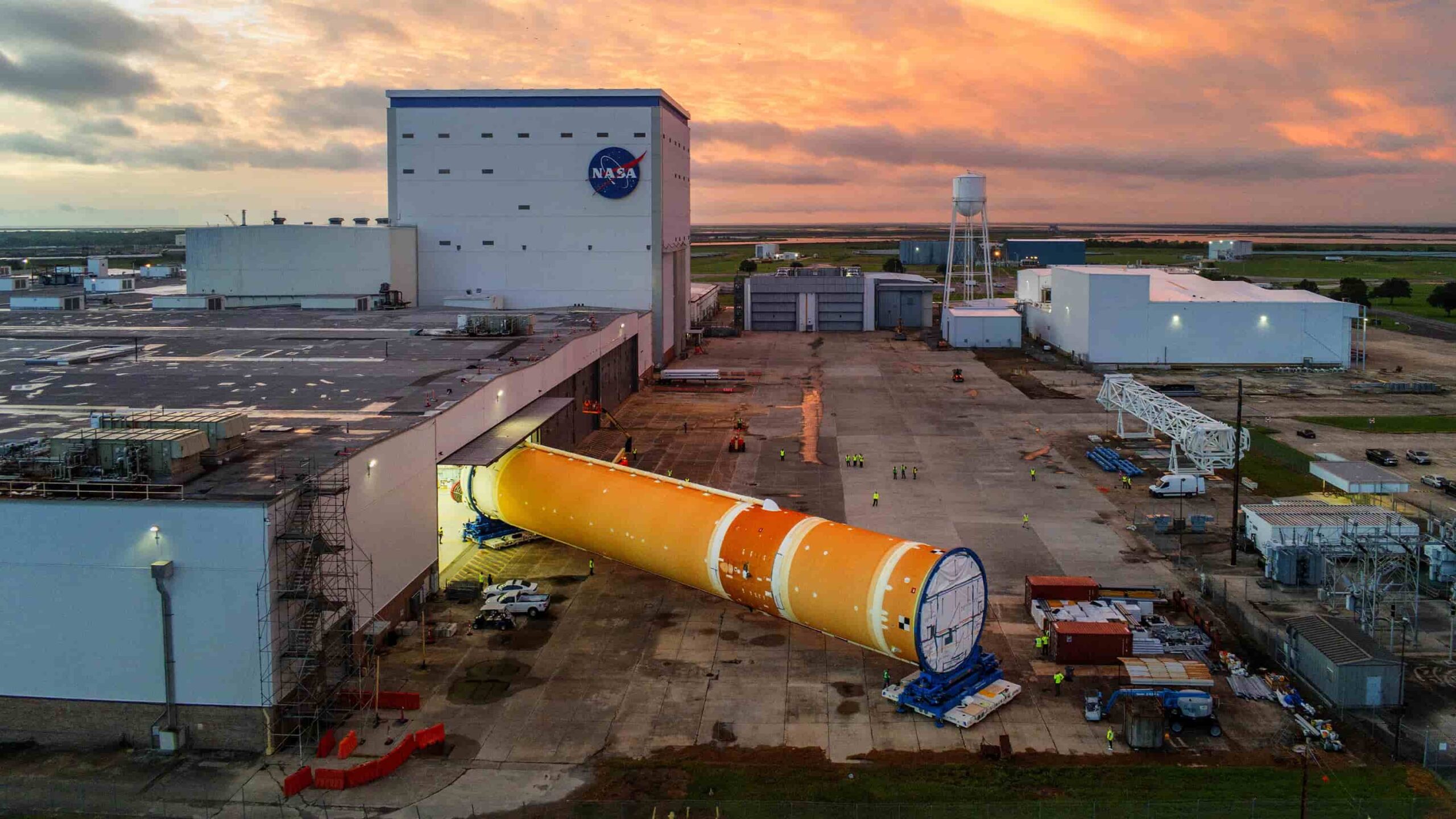The Future of NASA’s Space Launch System
NASA’s Space Launch System (SLS), a massive lunar rocket central to the Artemis program, faces growing scrutiny as rival rockets like SpaceX’s Starship gain momentum. With changing political landscapes and private companies pushing innovation, the future of SLS is becoming uncertain.
A Decade in the Making
SLS, developed over more than a decade, stands as an engineering marvel. At 322 feet (98 meters) tall, it is about 15% more powerful than the iconic Saturn V that powered the Apollo missions. Its purpose is clear: to return astronauts to the Moon. However, its price tag—an estimated $4.1 billion per launch—has drawn criticism, especially as newer, more cost-effective alternatives emerge.
The rocket was designed to launch NASA’s Orion spacecraft as part of the Artemis program, initiated in 2019 during the Trump administration. The program’s goal is to establish a sustainable human presence on the Moon and eventually pave the way for Mars exploration.
Despite its importance, SLS’s high costs and the rise of commercial competitors like SpaceX and Blue Origin have raised questions about its long-term viability.
Artemis Program and SLS Milestones
SLS has already flown once, in the Artemis I mission in 2022, which sent an uncrewed Orion spacecraft around the Moon. The next step, Artemis II, scheduled for September 2025, will send a four-person crew on a similar mission. Following that, Artemis III, set for September 2026, aims to land astronauts on the lunar surface for the first time in decades.
Future missions are also planned, including launching components of NASA’s Gateway lunar space station, beginning in 2028. Yet, recent shifts suggest some of these missions may be reconsidered or reassigned to commercial alternatives.
The SpaceX Challenge
SpaceX, led by Elon Musk, has disrupted the aerospace industry with its reusable Starship rocket. Designed for lunar landings, Mars exploration, and more, Starship is more powerful than SLS and reusable, significantly lowering costs.
In contrast, SLS is discarded after each launch, which adds to its already hefty price tag. SpaceX’s Starship was awarded a $2.9 billion contract by NASA in 2021 for its role in Artemis III. However, the rocket requires multiple launches to refuel in orbit before embarking on a Moon mission—a complexity that SLS avoids with its single-launch capability.
Still, Michael Bloomberg recently called SLS a “colossal waste of taxpayer money,” while journalist Eric Berger speculated there’s a 50-50 chance the rocket could be canceled.
Competing Arguments for SLS
Despite criticism, experts argue that SLS has advantages. Unlike Starship, which requires as many as 18 launches to fuel a lunar mission, SLS can directly deliver Orion to lunar orbit in one launch. This simplicity makes it an attractive option, especially for time-sensitive goals like beating China to the Moon.
NASA has invested heavily in SLS hardware, with parts for Artemis II, III, IV, and V already in production. “SLS can deliver more payload to the Moon in a single launch than any other rocket,” says NASA, emphasizing its critical role in the Artemis program.
The Political Landscape
The decision to cancel or continue SLS doesn’t rest solely with NASA. Political dynamics, such as the influence of Elon Musk in the Trump administration’s Department of Government Efficiency, could shape the rocket’s future. Musk, known for advocating cost-saving measures, may push for alternatives like Starship.
However, Laura Forczyk, a space analyst at Astralytical, notes that Congress has historically backed SLS due to its bipartisan support and economic impact in key districts. “SLS has been bipartisan and very popular,” she says.
Risks of Cancellation
Scrapping SLS could have broader implications for NASA’s overall funding. The agency’s $25.4 billion budget, the highest of any space agency, supports a wide array of scientific endeavors, from astrophysics and climate studies to planetary exploration.
“If you cancel SLS, you’re also canceling the broad support for NASA’s budget,” warns Abhishek Tripathi, a former SpaceX mission director. A reduction in funding could hinder other critical projects and make future budget increases unlikely.
A Likely Path Forward
For now, SLS is poised to at least complete Artemis II in 2025. Beyond that, its future hangs in the balance. Forczyk suggests that canceling SLS after Artemis III could be a logical move, allowing NASA to focus on commercial partnerships while avoiding further costs.
However, with China aiming to put humans on the Moon by 2030, the U.S. may find itself in a space race once again. Delays or cancellations of SLS could jeopardize NASA’s ability to meet its ambitious lunar goals.
Ultimately, the debate over SLS highlights a broader question: How should the U.S. balance innovation, cost, and geopolitical strategy in space exploration? The next few years will be crucial in determining whether SLS continues to be a cornerstone of NASA’s plans—or becomes a relic of the past.






